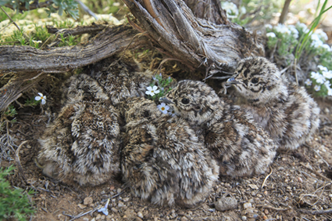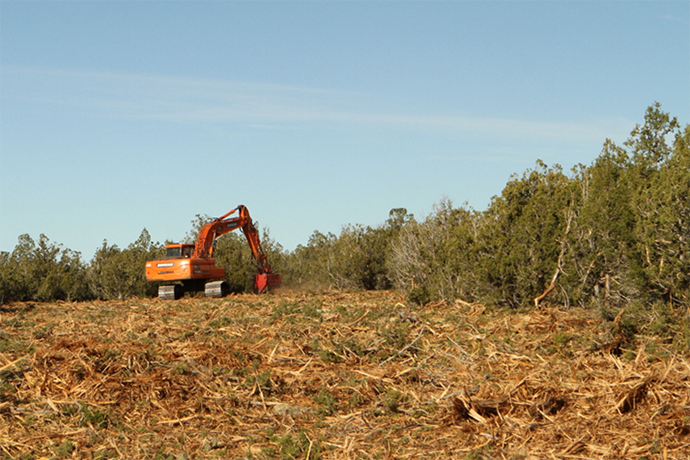USU Extension Protects Sage-grouse by Clearing Confiers
 Research published by Utah State University Extension specialists shows that the removal of invading conifer trees from sagebrush habitats could help boost success for nesting and brooding sage-grouse.
Research published by Utah State University Extension specialists shows that the removal of invading conifer trees from sagebrush habitats could help boost success for nesting and brooding sage-grouse.
“Removing trees goes against what we typically think is good for the environment,” said Terry Messmer, USU Extension wildlife specialist. “But this study scientifically validates this practice as a sage-grouse conservation strategy.”
According to the research, the encroachment of conifers into sagebrush habitats is one of several major causes of sage-grouse declines. As trees spread into the sagebrush, predation may increase because the trees provide new nest sites and perches to birds of prey. Conifers also alter sagebrush habitats by robbing the plants of water and nutrients from the soil.
Sage-grouse habitats cover 165 million acres across 11 states in the West, a loss of 56 percent from the species’ historic range. At one time, the greater sage-grouse population numbered in the millions, but is estimated to have dwindled to 200,000 to 500,000 individuals range wide.
 “Sage-grouse are considered the ‘umbrella species’ for 350 other species that depend on the sagebrush ecosystem for their survival,” Messmer said. “Conservation actions that benefit sage-grouse also benefit these other species and ensure the viability of the environmental services provided by sagebrush habitats.”
“Sage-grouse are considered the ‘umbrella species’ for 350 other species that depend on the sagebrush ecosystem for their survival,” Messmer said. “Conservation actions that benefit sage-grouse also benefit these other species and ensure the viability of the environmental services provided by sagebrush habitats.”
To conduct the study, researchers radio-marked 96 female sage-grouse hens in northwestern Utah and followed them and their chicks over a four-year period. Females that nested in areas cleared of conifers were more likely to successfully nest fledge their chicks.
“The speed at which these space-starved birds colonize our sagebrush restorations is remarkable, and their increased performance is the ultimate outcome in science-based conservation,” said Charles Sandford, former USU graduate student researcher.
Range-wide, 1 million acres of conifers have been cleared to conserve sage-grouse. In Utah alone, 500,000 acres have been cleared.
The study was published in the Journal of Rangeland Management & Ecology and is available online at http://tinyurl.com/SageGrouseStudy. More information about sage-grouse restoration can be found at www.utahcbcp.org.
Writer: Shelby Ruud shelby.ruud@usu.edu
Contact: Terry Messmer terry.messmer@usu.edu


 Utah 4-H & Youth
Utah 4-H & Youth